Karahunge – ‘Speaking Stones’ With Secrets – Remarkable Prehistoric Structures Of Armenia
A. Sutherland - AncientPages.com - Among many unsolved mysteries surrounding remarkable prehistoric structures of Armenia, there is a megalithic site of Karahunge or Carahunge ("Karahundj") covered with hundreds of vertical 1 - 2.8 m high megaliths of greatly varying form.
Not many people have heard of this ancient, obscure, and mysterious Armenian place.
The stone structures are scattered across the plain area at a height of nearly 1,750 meters above sea level. They are situated near the town of Sisian in the Syunik Province and about 200 km (124 mi) southeast of Yerevan, the capital of Armenia.
This ancient place called "Speaking Stones" or "Stones with Voice" has been abandoned and ignored for centuries.
It is an area of approximately 70,000 square meters covered with hundreds of vertically standing basalt stones. According to a recent scientific estimation based on ancient observations of definite stars, it has been estimated that the observatory was used during 7700-2200 B.C. for about 5500 years.
This is a preview of our premium article available only to members of Ancient Pages.
Become a member to read more - Click here
If you are already a member and have logged in to your account, you can access the article here
See also:
Surprising Ancient Signs Found On The Ceiling Of An Egyptian Temple In Saqqara Could Rewrite History
Incredible Cave With Secret ‘Door’ Discovered In The American West – Fascinating Underground Mystery
More From Ancient Pages Library Of Ancient And Unexplained Mysteries
More From Ancient Pages
-
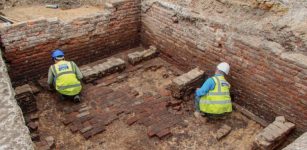 London’s Oldest Theater Red Lion Discovered Beneath Whitechapel
Archaeology | Jun 10, 2020
London’s Oldest Theater Red Lion Discovered Beneath Whitechapel
Archaeology | Jun 10, 2020 -
 Deciphered Ancient Stone Tablets Contain Sacred Knowledge That Could Re-Write History
Ancient Mysteries | Aug 28, 2018
Deciphered Ancient Stone Tablets Contain Sacred Knowledge That Could Re-Write History
Ancient Mysteries | Aug 28, 2018 -
 On This Day In History: Statue of Liberty Arrived In New York Harbor – On June 17, 1885
News | Jun 17, 2016
On This Day In History: Statue of Liberty Arrived In New York Harbor – On June 17, 1885
News | Jun 17, 2016 -
 European Neolithic Family Trees Shed Light On Social Organization
Archaeology | Jul 27, 2023
European Neolithic Family Trees Shed Light On Social Organization
Archaeology | Jul 27, 2023 -
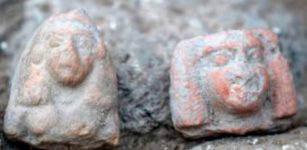 Remains Of 3,400-Year-Old Canaanite Citadel Unearthed In Nahariya, Western Galilee
Archaeology | Jan 6, 2016
Remains Of 3,400-Year-Old Canaanite Citadel Unearthed In Nahariya, Western Galilee
Archaeology | Jan 6, 2016 -
 Clay Cylinders With Oldest Known Alphabet Unearthed In Ancient Syrian City Of Umm-el Marra
Archaeology | Nov 21, 2024
Clay Cylinders With Oldest Known Alphabet Unearthed In Ancient Syrian City Of Umm-el Marra
Archaeology | Nov 21, 2024 -
 6,000-Year-Old Village Unearthed In Kurdestan
Archaeology | Apr 12, 2016
6,000-Year-Old Village Unearthed In Kurdestan
Archaeology | Apr 12, 2016 -
 Anne Neville – The Dramatical Story Of The White Queen
Featured Stories | May 22, 2020
Anne Neville – The Dramatical Story Of The White Queen
Featured Stories | May 22, 2020 -
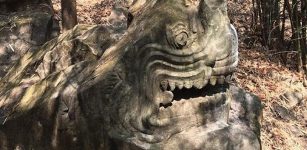 Ancient Statue Of Makara, Legendary Sea-Creature Found In Cambodia
Archaeology | Jan 29, 2020
Ancient Statue Of Makara, Legendary Sea-Creature Found In Cambodia
Archaeology | Jan 29, 2020 -
 Neanderthal Hunting Camp Discovered In The Center Of The Iberian Peninsula
Archaeology | Aug 30, 2021
Neanderthal Hunting Camp Discovered In The Center Of The Iberian Peninsula
Archaeology | Aug 30, 2021 -
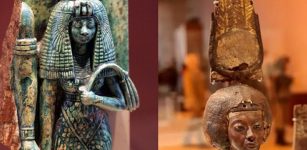 Life And Legacy Of Queen Tiye, Mother Of Akhenaten – Was She Egyptian Or Nubian?
Featured Stories | Jul 20, 2018
Life And Legacy Of Queen Tiye, Mother Of Akhenaten – Was She Egyptian Or Nubian?
Featured Stories | Jul 20, 2018 -
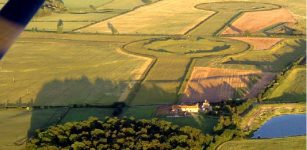 Future Of Thornborough Henges Secured – Stonehenge Of The North Preserved For The Nation
News | Feb 3, 2023
Future Of Thornborough Henges Secured – Stonehenge Of The North Preserved For The Nation
News | Feb 3, 2023 -
 Ancient History Of New Year’s Celebrations And Traditions From Around The World
Ancient Traditions And Customs | Dec 31, 2024
Ancient History Of New Year’s Celebrations And Traditions From Around The World
Ancient Traditions And Customs | Dec 31, 2024 -
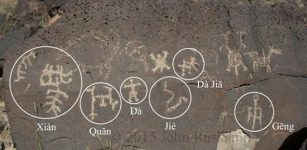 Controversial Evidence – Ancient Chinese Visited America 2,500 Years Ago
Civilizations | Mar 9, 2015
Controversial Evidence – Ancient Chinese Visited America 2,500 Years Ago
Civilizations | Mar 9, 2015 -
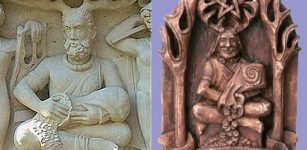 Enigmatic Cernunnos – Most Ancient, Stag-Antlered, Peaceful God Of Celtic People
Celtic Mythology | Aug 26, 2019
Enigmatic Cernunnos – Most Ancient, Stag-Antlered, Peaceful God Of Celtic People
Celtic Mythology | Aug 26, 2019 -
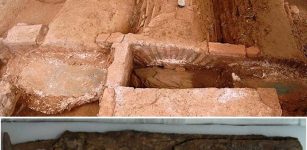 Gothic Warrior With Rare Sword Unearthed In Thessaloniki, Greece
Archaeology | Apr 23, 2021
Gothic Warrior With Rare Sword Unearthed In Thessaloniki, Greece
Archaeology | Apr 23, 2021 -
 Scotland’s Mysterious Ballachulish Figure Could Be Cailleach Bheithir – Ancient Hag Goddess Of Winds And Storms
Artifacts | Nov 23, 2018
Scotland’s Mysterious Ballachulish Figure Could Be Cailleach Bheithir – Ancient Hag Goddess Of Winds And Storms
Artifacts | Nov 23, 2018 -
 Makhunik – 5,000-Year-Old City Of Dwarfs Who Hoped To Return One Day
Civilizations | May 28, 2014
Makhunik – 5,000-Year-Old City Of Dwarfs Who Hoped To Return One Day
Civilizations | May 28, 2014 -
 Are The Baffling La Marche Cave Paintings Authentic Or Cunning Forgeries?
Featured Stories | Sep 14, 2020
Are The Baffling La Marche Cave Paintings Authentic Or Cunning Forgeries?
Featured Stories | Sep 14, 2020 -
 Lost Medieval Home Of The Lords Of The Isles – Reconstructed Virtually
Archaeology | May 29, 2019
Lost Medieval Home Of The Lords Of The Isles – Reconstructed Virtually
Archaeology | May 29, 2019



